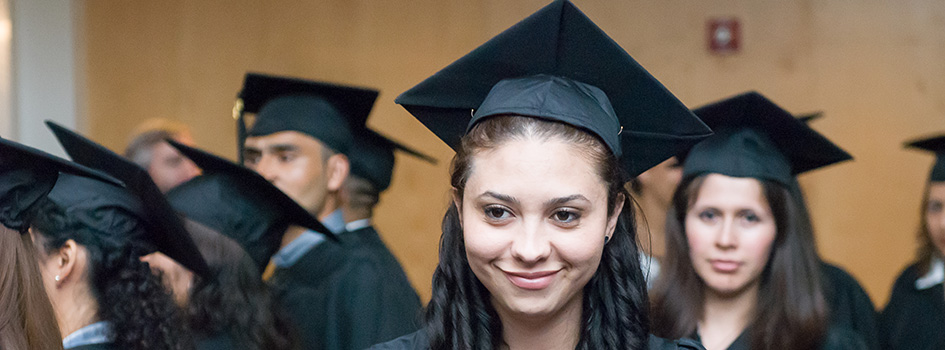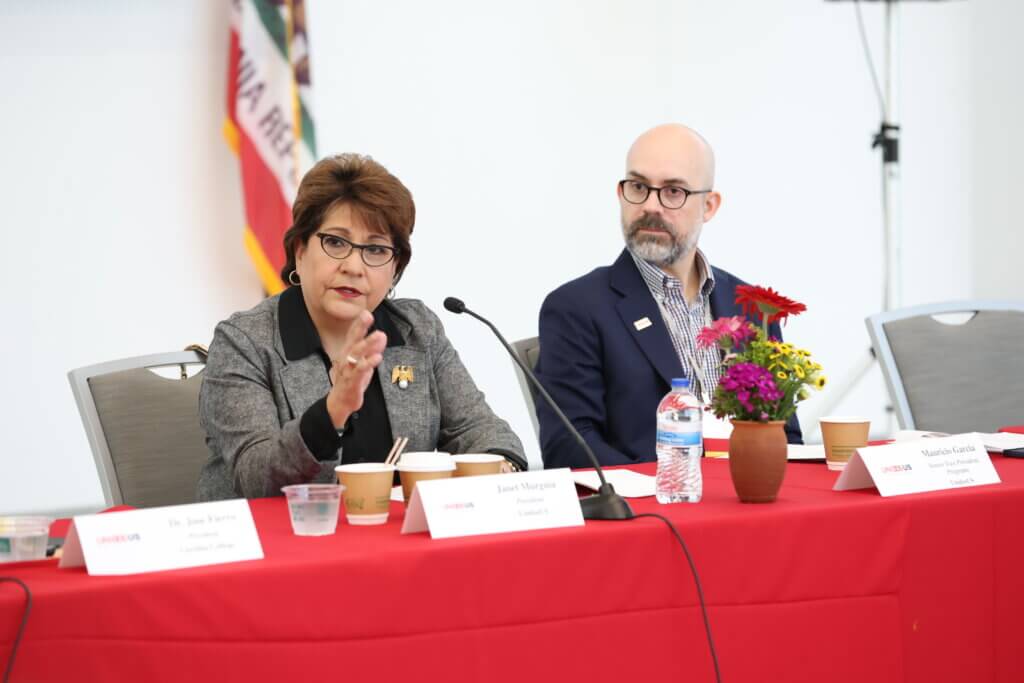Combatting Predatory Inclusion: the U.S. Department of Education’s new Gainful Employment rule holds for-profit institutions of higher education accountable for the outcomes of Latino students
In the mid-2000s Chicago resident Victoria De La Torre wanted to increase her earnings and prestige as a pastry chef by going back to school for an associates degree in Applied Science. Le Cordon Bleu of North America, a for-profit culinary institute, originally affiliated with a famed culinary school of the same name, looked like a great place to do that.
–Author Magin Sanchez serves as UnidosUS’s higher education policy analyst.
“Initially drawn to culinary school to pursue my passion for baking, I chose Le Cordon Bleu, expecting the best,” said de La Torre. “Despite promises of a career jumpstart, the reality was that I earned the same as those without culinary school. The school’s open house misled me about job opportunities, and I faced stigma for attending a seemingly pointless institution.”
Like thousands of fellow students who attended Le Cordon Bleu’s 16 U.S.culinary schools, Victoria felt misled by the promises made by the institution. “The touted success stories were outliers,” said De La Torre.“Staff assured me of high future earnings to easily cover tuition, but this wasn’t the case.” Worse, in addition to low earnings, students like de La Torre were left with significant debt burdens. “Ten years post-graduation, I still owe $15,000, even after years of attempted debt repayment.”
It turned out that in 2008, a large number of graduates of Le Cordon Bleu North America, 2,200 to be exact, filed a class-action suit for similar complaints. In 2015, the Chicago-based for-profit Career Education Corporation that licensed the Le Cordon Bleu name, opted to close all of its 16 U.S, schools, citing the introduction of a 2014 federal education policy known as the gainful employment rule which resulted in their loss of federal financial aid.
Scenarios like these are common in reports by non-profit educational research organizations such as The Century Foundation, which have spent the past few years looking into the impact and credibility of for-profit higher education institutions.
Over the past several decades, tens of thousands of students have chased their higher-education dreams through a proliferation of for-profit programs only to discover a mirage. Multiple studies have shown that for-profit institutions often leave students, especially those who are first-generation and hailing from underserved communities, with lower earnings and higher debt burdens than those in similar programs in public or non-profit institutions.
A 2020 UnidosUS factsheet noted that only 29% of Latinos enrolled in four-year for-profit colleges graduate. Worse yet, more than 76% of such enrolled students took out loans to pay for their education, and were nearly four times as likely to default within 12 years compared to Latinos who attended other institutions. Furthermore, compared to public institutions, students borrowed $10,000 more in loans when attending for-profit institutions.
As a result, some educational advocates have labeled these for-profit practices predatory inclusion, and the Biden administration has a plan aimed at combating it.
This past October, the Department of Education (ED) issued new final regulations with the aim of holding higher education institutions accountable for fulfilling their promises of opening the door to economic and social mobility. Tasked with providing students with protections against unaffordable debt or no improvement to their earnings, the newly revitalized Gainful Employment (GE) rule should have life-changing impacts for Latino students. Students who transfer away from failing programs to nearby, higher-value programs could see a near $10,000 increase in annual earnings and a $1,000 reduction in annual debt payments, drastically improving the economic conditions for many Latino students.
First conceived during the Obama administration in 2011, implementation of GE has been a long road fraught with potholes and roadblocks. Based on a provision in the Higher Education Act requiring that non-degree career education programs lead to “gainful employment in a recognized occupation,” the rule established the standard that graduates must leave such programs prepared for well-paying jobs.
In the 12 years since, the rule has been struck down in federal court, reinstated by ED, illegally derailed, and ultimately repealed by the Trump administration, and has now been reinstated and strengthened by the Biden administration.
This latest version goes into effect July 2024, and includes two metrics GE programs must pass in order to remain eligible to receive federal student aid funding, the lifeblood of the for-profit industry. First, programs must pass the debt-to-earnings metric, where debt payments must be no more than 8% of annual earnings or 20% of discretionary earnings for a single individual. Second, programs must pass the earnings premium metric, ensuring that the median graduate earns more than the median early-career high-school graduate in their state. Institutions that fail to pass either or both metrics in two out of three years will lose their federal funding for those programs.
Such protections are crucial, considering the increasing targeted recruitment of Latinos by for-profit colleges. A Spring 2023 report by the National Student Clearinghouse Research Center showed that in the last two years, Latino undergraduate enrollment at for-profit schools was increasing faster than at other higher education institutions. Last year, for-profit schools were seeing nearly an 11% growth rate compared to negative growth seen in public four-year and two-year schools.
Ensuring that college graduates can afford to repay their debts and earn more than those with high school diplomas seems like common sense, but ED estimates that such outcomes are anything but common for Latino students attending for-profit colleges.
According to the Department’s projections, over 90% of students in a failing GE program would be attending a for-profit institution. While these numbers are staggering, they come as no surprise to UnidosUS. Under the previous version of the regulation in 2014, 166,000 Latino and Black students were enrolled in for-profit institutions ED considered to be failing or about to in the 2019-20 school year, representing nearly one out of every three of such students. Disproportionately, failing for-profit programs enroll Latino and black students at higher rates.
And despite the for-profit industry’s claims that closing their programs would adversely affect students in these communities, a recent ED data analysis by the education think tank New America revealed that Hispanic-Serving Institutions were much less likely to fail the rule than their for-profit industry counterparts. This finding flies in the face of the argument that institutions serving underserved student groups would fail because of the systemic challenges facing the demographics of the students they enroll, such as discrepancies in salary according to race and gender. A 2021 ED fact sheet noted that factors such as race and gender explained “relatively little” of whether a program passed or failed the GE rule. Rather, blame should fall on the shortcomings of for-profit schools, where more than half have at least one program that did not meet the GE standards.
Reflecting back, Victoria says she regrets not researching more.
“My advice to prospective students is to inquire and not succumb to pressure during open houses,” she said, noting that a decade after obtaining her associates degree, she was still making minimum wage. These new regulations will ensure future students know about an institution’s poor outcomes before finishing their applications because they must formally acknowledge that they have viewed these disclosures before enrolling and accepting financial aid.
While UnidosUS sees this newly finalized rule as a major milestone, it also cautions that the rule has shortcomings. For example, it fails to capture data on debts taken in the form of ParentPLUS loans taken out by parents, but are often absorbed by the student. This omission is particularly concerning for Latino students, whose use of such loans has increased by 50% since the mid-1990s, according to a 2022 report by The Century Foundation. This report also shows that disproportionately low-income Black and Latino families are more likely than low-income white families to take on debt through this program.
The new GE rule comes as a package deal with other new financial transparency regulations aimed at streamlining financial aid offers so that students are well-informed of the terms, such as the difference between a grant and a loan. It also seeks to curtail the practice of withholding transcripts paid for with federal money for students who have yet to settle remaining unpaid bills such as parking fees and remaining tuition balances.
These are all positions for which UnidosUS has long advocated, and its education team will be closely following to see if these measures are implemented by the July 1 deadline.
On December 22nd, the Texas-based for-profit institution Duvall’s School of Cosmetology and the American Association of Cosmetology Schools filed the new rule’s first lawsuit.





